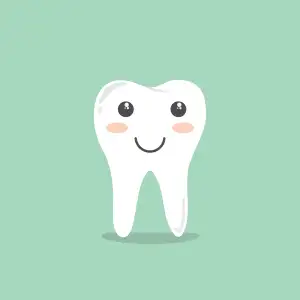Efficient Dental Ultrasonic Cleaner Protocol: A Step-by-Step Guide for Optimal Oral Health

- Importance of maintaining oral hygiene in dental care
- Overview of dental ultrasonic cleaners and their benefits
- Step-by-step procedure for using a dental ultrasonic cleaner
- Preparing the ultrasonic cleaner and solution
- Preparing the dental instruments for cleaning
- Placing the instruments in the ultrasonic cleaner
- Setting the appropriate cleaning time and temperature
- Activating the ultrasonic cleaner
- Monitoring the cleaning process
- Safety precautions while using a dental ultrasonic cleaner
- Wearing appropriate personal protective equipment (PPE)
- Ensuring proper ventilation in the workspace
- Handling and disposing of the cleaning solution properly
- Maintenance and care of dental ultrasonic cleaners
- Regular cleaning and disinfection of the ultrasonic cleaner
- Inspecting and replacing worn-out parts
- Following manufacturer's guidelines for maintenance
Maintaining optimal oral health is crucial in dental care, as it plays a significant role in preventing various dental problems. One effective way to ensure thorough cleaning of dental instruments is by utilizing a dental ultrasonic cleaner. This innovative technology utilizes high-frequency sound waves to remove debris and contaminants from instruments, providing a more efficient and effective cleaning process. The dental ultrasonic cleaner protocol outlines the step-by-step procedure for using this device, ensuring optimal oral hygiene and promoting overall oral health. By following this protocol, dental professionals can enhance their infection control measures and provide patients with the highest standard of care.
Importance of maintaining oral hygiene in dental care
Maintaining oral hygiene is crucial in dental care as it plays a vital role in preventing various oral health issues. Poor oral hygiene can lead to plaque buildup, which can cause tooth decay, gum disease, and bad breath. Additionally, it has been linked to more serious health conditions such as cardiovascular disease and diabetes. Regularly cleaning and caring for your teeth and gums helps remove bacteria and food particles that can contribute to these problems. By prioritizing oral hygiene, individuals can ensure a healthy mouth and overall well-being.
Overview of dental ultrasonic cleaners and their benefits
Dental ultrasonic cleaners are powerful tools used in dental care to remove stubborn debris and stains from dental instruments. These cleaners utilize high-frequency sound waves to create microscopic bubbles that implode, generating intense cleaning action. The benefits of using a dental ultrasonic cleaner include efficient and thorough cleaning, reduced risk of cross-contamination, and extended lifespan of dental instruments. The gentle yet effective cleaning process ensures that even hard-to-reach areas are thoroughly cleaned, promoting optimal oral health for patients.
Step-by-step procedure for using a dental ultrasonic cleaner
a. Preparing the ultrasonic cleaner and solution: Fill the tank with an appropriate cleaning solution, following the manufacturer's instructions. Ensure that the tank is clean and free from any debris.
b. Preparing the dental instruments for cleaning: Rinse the instruments under running water to remove any visible debris. Place them in a tray or basket, ensuring they are fully submerged in the cleaning solution.
c. Placing the instruments in the ultrasonic cleaner: Carefully lower the tray or basket into the tank, ensuring that it is securely positioned and does not touch the sides of the tank.
d. Setting the appropriate cleaning time and temperature: Consult the manufacturer's guidelines to determine the recommended cleaning time and temperature for different types of instruments. Adjust these settings accordingly on the ultrasonic cleaner.
e. Activating the ultrasonic cleaner: Switch on the ultrasonic cleaner, ensuring that it is functioning properly and generating sufficient vibrations to create cavitation bubbles in the cleaning solution.
f. Monitoring the cleaning process: Keep a close eye on the cleaning process, periodically checking if any instruments require repositioning or additional cleaning time. Avoid overloading or overcrowding of instruments in order to ensure optimal cleaning efficiency.
By following this step-by-step procedure, dental professionals can effectively utilize dental ultrasonic cleaners to achieve thorough instrument sterilization and enhance overall oral health outcomes.
Preparing the ultrasonic cleaner and solution
Preparing the ultrasonic cleaner and solution is an essential step in ensuring effective cleaning of dental instruments. Start by filling the ultrasonic cleaner tank with a suitable cleaning solution recommended by the manufacturer. It is important to use a solution that is specifically formulated for use in ultrasonic cleaners to achieve optimal results. The solution should be mixed according to the instructions provided, usually with water at a specific ratio. Once the solution is prepared, ensure that the tank is filled to an appropriate level, taking care not to overfill it. This will prevent spillage and ensure proper circulation of the solution during the cleaning process.
Preparing the dental instruments for cleaning
Before using a dental ultrasonic cleaner, it is crucial to properly prepare the dental instruments for cleaning. Start by removing any visible debris or residue from the instruments using a brush and running water. This step helps to prevent clogging of the ultrasonic cleaner and ensures effective cleaning. Next, inspect the instruments for any signs of damage or wear, such as loose or missing parts. It is important to repair or replace damaged instruments before placing them in the ultrasonic cleaner to avoid further damage. Finally, organize the instruments in a way that allows proper circulation of the cleaning solution around each instrument. This can be achieved by arranging them in a single layer without overcrowding the cleaning basket. By following these steps, you can ensure optimal results from your dental ultrasonic cleaner and maintain excellent oral hygiene standards.
Placing the instruments in the ultrasonic cleaner
Placing the instruments in the ultrasonic cleaner is a crucial step in the dental ultrasonic cleaner protocol. Before placing the instruments, ensure that they are free from any debris or visible contaminants. It is recommended to use a designated tray or basket provided with the ultrasonic cleaner for easy handling and to prevent damage to the instruments.
Carefully arrange the instruments in a single layer without overcrowding them, allowing proper circulation of the cleaning solution. Avoid overlapping or touching of instruments as this may hinder effective cleaning.
It is important to note that delicate or fragile instruments should be placed in a separate container within the ultrasonic cleaner to prevent damage. This will ensure that all instruments receive an equal and thorough cleaning.
Once all the instruments are properly arranged, gently lower the tray or basket into the ultrasonic cleaner's tank, ensuring it is fully submerged in the cleaning solution. Avoid forcefully dropping or banging the tray as it may cause damage to both the instruments and the ultrasonic cleaner.
By following these steps, you can ensure that your dental instruments are correctly placed in the ultrasonic cleaner for optimal cleaning and maintenance of oral hygiene.
Setting the appropriate cleaning time and temperature
Setting the appropriate cleaning time and temperature is crucial for optimal results when using a dental ultrasonic cleaner. The cleaning time should be based on the manufacturer's recommendations, typically ranging from 5 to 20 minutes. This ensures thorough removal of debris and bacteria from the dental instruments. Additionally, selecting the correct temperature is important as it affects the efficiency of the cleaning process. Generally, a temperature between 40-50 degrees Celsius is recommended to enhance the effectiveness of the ultrasonic waves without causing damage to the instruments. It is essential to follow these guidelines to achieve maximum cleanliness and maintain instrument longevity.
Activating the ultrasonic cleaner
Activating the ultrasonic cleaner is a crucial step in the dental ultrasonic cleaner protocol. Once the instruments are placed in the cleaner and the appropriate cleaning time and temperature are set, it is time to activate the machine. This can usually be done by pressing a power button or turning a dial to start the cleaning cycle.
The activation of the ultrasonic cleaner initiates the production of high-frequency sound waves that create microscopic bubbles in the cleaning solution. These bubbles implode rapidly, creating a process known as cavitation. The energy released during cavitation helps to dislodge and remove debris, bacteria, and other contaminants from the dental instruments.
It is important to note that activating the ultrasonic cleaner does not require any physical force or scrubbing. The cleaning action is achieved solely through the power of cavitation. Therefore, it is essential to avoid touching or disturbing the instruments while they are being cleaned.
During this stage, it is advisable to closely monitor the cleaning process. This allows for timely adjustments if necessary, such as increasing or decreasing the cleaning time based on instrument cleanliness. It also ensures that any potential issues with equipment malfunction can be addressed promptly.
By following these steps and properly activating the ultrasonic cleaner, dental professionals can effectively clean their instruments and maintain optimal oral health for their patients.
Monitoring the cleaning process
Monitoring the cleaning process is a crucial step in ensuring optimal oral health. While the dental instruments are being cleaned in the ultrasonic cleaner, it is important to closely observe the process. This allows for any potential issues or complications to be identified and addressed promptly. By monitoring the cleaning process, dental professionals can ensure that all contaminants and debris are effectively removed from the instruments. Regular visual inspection can also help identify any damage or wear on the instruments, allowing for timely repairs or replacements. Overall, monitoring the cleaning process ensures that the dental ultrasonic cleaner is functioning properly and producing satisfactory results for maintaining oral hygiene.
Safety precautions while using a dental ultrasonic cleaner
Safety precautions while using a dental ultrasonic cleaner are crucial to ensure the well-being of both the user and patients. Firstly, it is essential to wear appropriate personal protective equipment (PPE) such as gloves, goggles, and a lab coat to protect against potential splashes or aerosols. Secondly, proper ventilation in the workspace should be ensured to minimize exposure to any fumes or vapors that may be released during the cleaning process. Lastly, handling and disposing of the cleaning solution should be done following recommended guidelines to prevent any accidental ingestion or contamination. By adhering to these safety measures, dental professionals can maintain a safe environment while utilizing the benefits of a dental ultrasonic cleaner.
Wearing appropriate personal protective equipment (PPE)
When using a dental ultrasonic cleaner, it is crucial to wear appropriate personal protective equipment (PPE) to ensure safety and prevent any potential hazards. PPE includes gloves, goggles or face shields, and protective clothing. Gloves protect against chemical exposure and potential injuries from sharp instruments. Goggles or face shields shield the eyes and face from splashes or aerosols generated during the cleaning process. Protective clothing provides an additional barrier against contamination. Wearing PPE not only safeguards the user but also maintains a sterile environment for optimal oral health outcomes.
Ensuring proper ventilation in the workspace
Ensuring proper ventilation in the workspace is crucial when using a dental ultrasonic cleaner. These machines produce aerosols and vapors that may contain potentially harmful substances, such as bacteria, viruses, and chemicals. Adequate ventilation helps to minimize the concentration of these substances in the air, reducing the risk of inhalation or exposure to both patients and dental professionals. It is recommended to have a well-ventilated room with windows that can be opened or an exhaust system in place. This helps to maintain a clean and safe environment for everyone involved in the dental cleaning process.
Handling and disposing of the cleaning solution properly
Handling and disposing of the cleaning solution properly is crucial to ensure the safety and environmental sustainability of dental ultrasonic cleaner protocol. After each use, it is important to carefully remove the instruments from the cleaner and dispose of any remaining solution. The used solution should be collected in a designated container and disposed of according to local regulations for hazardous waste. Avoid pouring it down the drain or throwing it in regular trash bins as it may contain contaminants that can harm the environment. By following proper handling and disposal procedures, we can contribute to maintaining a clean and healthy environment while promoting optimal oral health.
Maintenance and care of dental ultrasonic cleaners
Maintenance and care of dental ultrasonic cleaners is crucial to ensure their optimal performance and longevity. Regular cleaning and disinfection of the ultrasonic cleaner is essential to prevent the buildup of bacteria and contaminants. This can be done by following the manufacturer's guidelines for cleaning solutions and procedures. Additionally, inspecting and replacing worn-out parts such as transducers or baskets is necessary to maintain the efficiency of the cleaner. Adhering to the manufacturer's recommendations for maintenance will help extend the lifespan of the equipment and ensure its effectiveness in providing thorough dental instrument cleaning.
Regular cleaning and disinfection of the ultrasonic cleaner
Regular cleaning and disinfection of the ultrasonic cleaner is essential to maintain its effectiveness and prevent cross-contamination. After each use, the cleaner should be emptied and thoroughly cleaned using a mild detergent or enzymatic cleaner. Pay special attention to the tank, lid, and any removable parts. Use a soft brush to remove any debris or residue. Rinse all components with clean water to ensure no cleaning solution remains.
To disinfect the ultrasonic cleaner, prepare a solution of 70% isopropyl alcohol or an EPA-approved disinfectant according to the manufacturer's instructions. Fill the tank with the solution and run the cleaner for 10-15 minutes. This will help eliminate any remaining bacteria or pathogens.
After disinfection, empty and rinse the tank thoroughly with clean water to remove any traces of disinfectant. Wipe down the exterior surfaces of the cleaner with a damp cloth.
It is important to follow these cleaning and disinfection procedures regularly to maintain optimal performance and ensure a safe and hygienic environment for dental instrument cleaning.
Inspecting and replacing worn-out parts
Inspecting and replacing worn-out parts is an essential aspect of maintaining dental ultrasonic cleaners. Over time, the components of the cleaner can wear down or become damaged, which can affect its performance and efficiency. Regular inspection allows for timely identification of any worn-out parts that need replacement. This includes checking the transducers, baskets, lids, and seals for signs of wear or damage. By promptly replacing these worn-out parts with new ones, the ultrasonic cleaner can continue to function optimally and provide effective cleaning results. Following the manufacturer's guidelines for inspection and replacement ensures the longevity and reliability of the dental ultrasonic cleaner.
Following manufacturer's guidelines for maintenance
Following the manufacturer's guidelines for maintenance is crucial to ensure the optimal performance and longevity of your dental ultrasonic cleaner. These guidelines provide specific instructions on how to clean, disinfect, and maintain the equipment. By adhering to these guidelines, you can prevent damage to the cleaner and ensure its effectiveness in removing debris and bacteria from dental instruments. Regular maintenance also helps identify any worn-out parts that need replacement, ensuring the continued efficiency of the cleaner. Remember, proper maintenance not only extends the lifespan of your dental ultrasonic cleaner but also contributes to maintaining optimal oral health for your patients.
In conclusion, the dental ultrasonic cleaner protocol plays a crucial role in promoting optimal oral health. By effectively removing plaque, tartar, and bacteria from dental instruments, it helps prevent the spread of infections and diseases. Regular use of ultrasonic cleaners ensures that dental professionals can provide safe and hygienic treatments to their patients. Additionally, maintaining proper maintenance and care of these cleaners prolongs their lifespan and ensures their effectiveness. Incorporating this protocol into dental practices is essential for maintaining high standards of oral hygiene and ensuring the overall well-being of patients.
Published: 27. 02. 2024
Category: Health



